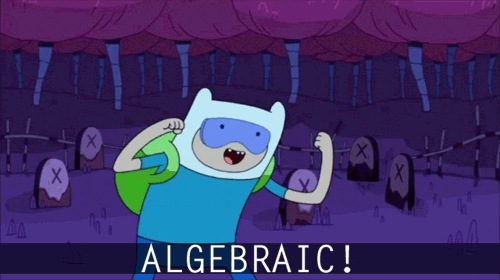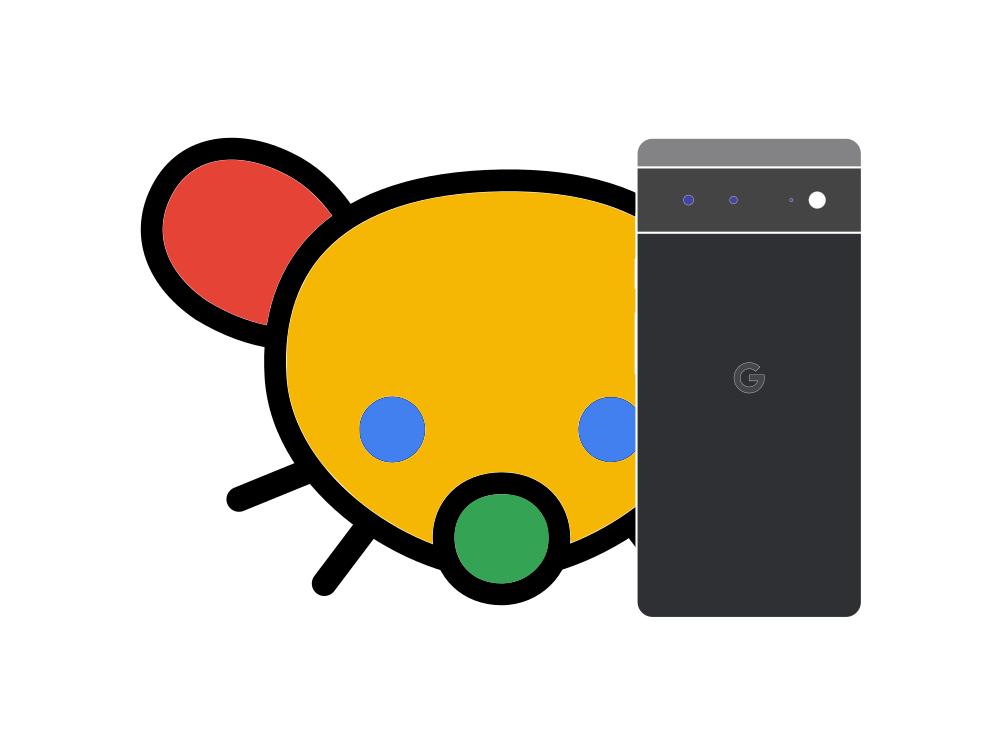







What I would like is something that gives me the framework to host my own server-side computations at home.


newborn stars that shouldn’t exist
Unexpectedly toxic for the astronomical community.


Yeah. Been trying to find a non-boring way to visualize the start of the universe for a long time. Most of the time I reach for binary which in retrospect is way less fun than trains 🚂


A lot of people describe the first moment of the big bang as infinitely small, dense, and hot. These descriptions may approximate that first moment of existence, but they slightly miss the mark because in the very first moment of existence, size, density, and temperature didn’t exist. There was nothing to compare anything else against.
Instead, let’s visualize that moment as infinitely same. Erase all thoughts of violent explosions happening very quickly and instead just imagine a single point of light. Not big, because size requires multiple things. Not small because it encompasses everything. Just one infinite same.
Now, since it’s hard for us to visualize change in an infinite void that is simultaneously nothing and everything, imagine that point of light as a magical tank engine at the front of a never-ending train. And our job as conductors of that train is to get to the caboose at the end.
The train cars could theoretically go in any order, but because we conductors are beings of time who need them to arrive on a schedule, we must visit each car in a precise order. And before we can access a car, we must make it unique by showing it something that has never been seen before.
For the first car, this is easy. We simply show it the tank engine at the front of the train. So, the inside of the first car transforms its interior into a copy of the tank engine it’s attached to.
But when we arrive at the second car, things are more complicated. The cars have already seen the tank engine. So, instead, we show the second car the first car. And the second car transforms into a copy of the first car and the tank engine attached to that. And inside the copy of the first car is another copy of the tank engine.
As you can imagine, the further down we get on this train, the more this starts to get out of hand. Copies of copies of copies abound. The magic train is powerful, but as mortal conductors of time, we worry our own powers may have limits. So, to reduce the burden on ourselves, we take some shortcuts. Instead of trying to visualize increasingly long nested copies of trains inside each new car we visit, we start to conceptualize these copies as amounts, or amplitudes. When we open the door to a new car, all of the amplitudes inside resonate and interact, becoming maybe more abstract than they are in reality. They form spatial dimensions and physical properties, as mediated by fundamental forces.
These aren’t set in stone, but determined by the lens through which we view them. And when we look through specific lenses, we see these forces causing certain repeated amplitudes to intermingle and stabilize to the point that even though all of the train copies are further nested when we step into the next car, we can recognize and identify some of the same structures, just shifted slightly in their spatial relationships since we last witnessed them in the previous car. We call these persistent formations matter. And as their shared spatial relationships cause them to cluster and coalesce, we refer to that as gravity.
While in the early cars, this continuum of space and matter is not impossible to conceptualize, the more cars we travel through, the more apparent it becomes that these increasingly complex objects are becoming more and more isolated from each other. At every scale of amplitude, each nested car is attached to its own tank engine. While these engines can interact with each other virtually, at the end of the day, they are all just virtual copies of the train we are on. It is entirely impossible for any one of these tank engines to travel so far that it reaches the edge of its bounding box. Because that bounding box is just a lens through which we imagine overlapping traits of increasingly many very similar objects. And the more of them we imagine, the more space is required to provide the virtual framework of this lens.
So, when we feel like we are experiencing random events in our small subsection of the universe, those events are not truly random, but instead the result of our precise position in the the universal train we’ve been virtually sliding through for over 13 billion years. The universe has become so large that it contains every possible event that could have happened in this span of time. The events are not random but calculated, and duplicated every moment so that every time we enter a new train car, two copies of our observable universe exist at a distance so far apart it’s impossible to comprehend.
And when we observe celestial objects apparently propelled away from each other at increasing speed, they are not really being pushed or pulled anywhere. It is simply an artifact of trying to keep track of the “same” object in rapidly advancing train cars, while each car doubles in size to contain everything the previous car had, as well as everything new that might emerge from the duplication event. The celestial objects year by year, and indeed ourselves from moment to moment, are never the same thing twice. It’s an illusion brought forth by our brains being born into a cosmic flipbook.
Even something as simple as seeing multicolored pixels on this screen is not real, but the result of virtual “tank engines” moving into the same spatial zones occupied by our retinas, which are themselves constructed of virtual trains of varying size. The reason photons move at a set maximum speed which makes them exempt from experiencing time is because they are all just virtual copies of the real locomotive which is driving the whole train. Every photon in our universe is just a make-believe copy of the very first moment of the big bang. A specter of infinite sameness.
So, objects in our universe aren’t moving apart as much as the space between them is increasing to account for the overhead of a universe with constantly growing entropy and uniqueness. The extra space represents a boundary which limits how far light can travel and affect matter in its realm of influence. If you’re still reading this, somewhere out there, in a part of our universe so far away that light from our known universe will never even remotely reach, there is an opposite you made of antimatter reading the exact same thing as written by an opposite me. But we are only made of matter because of a virtual compression of sameness, so that antiverse may be the exact place where the curvature of the entire universe loops back around and is overlaid upon itself. And the uncertainty of photons may arise from the fact that there are two identical universes overlapped and constantly exchanging probabilities. And this may be the compressive property which allows the fundamental forces to exist in the first place. So, say hi to yourself. You’re the reason you’re here.


Seen about the first half of it so far and I really like it. I feel like it’s something I can recommend to friends who want to understand the appeal One Piece without having to slog through hundreds of episodes. I really hope it gets a season 2 so they can give the Arabasta arc a similar treatment.


As someone who watches episodes week to week, no you don’t.
I’d call it a success, in that as I was scrolling, before I saw the title, I thought, “Is that meant to be Danny Pudi?”


Good shout. Been at least a decade since I tried emulating Dreamcast. Just need to make sure I buy a USB adapter for the controller, for the complete experience.


I grew up playing the 3D version of Centipede on the Sega Dreamcast. The game was a fundamental part of my childhood.
For whatever reason, I’ve never spoken to even a single other person who has ever played it (aside from my brother).
The level design was crazy. Tons of replayability, a low barrier to entry, but so difficult in the later worlds I never got close to finishing it. Soundtrack and sound effects I never got tired of hearing. Yet, no one seems to have heard of it.
I’m planning on getting the iPhone 15, now that they’re switching to USB C. My last iPhone was an iPhone 4.
To be honest, some of the cultish gimmicks have swayed me. The “in group” mentality of having the right color of text messages. The ability to send videos that aren’t garbage quality. The ease of having shared photo albums with people in my family who also have iPhones. I know these are mostly underhanded tactics from Apple to make their product a status symbol, but I’ve grown tired of being on the outside. Still, I’m keeping my Android as a second line for various reasons.
There are a few hardware components that made me consider spending the money on an iPhone. The biggest one is the Lidar sensor. I don’t know of any other phone that gives you the ability to combine Lidar and camera technology to create full color 3D models of your surroundings. I can’t wait to 3D print my cat.
So multitalented! I can see why they called him Alexander the Great.
Technology Connections - For when you want to know more about turn indicators than you ever thought you could want to know.


And I’ve just made my own source which says it’s already launched.
Not me, I’m a purist. I drink only hydrogen and oxygen.


My favorite games on Android:
Honorable classic game mentions:


“Hey, you want to play some YYWTGRSHYGNLSYCT tonight?”
“Yeah, I’d love to play some YYWTGRSHYGNLSYCT, bro.”
“Cool, let’s get our YYWTGRSHYGNLSYC on.”
“Wait, what game?”


Yeah, I didn’t know what that logo was, so I was hoping that by omitting it, someone would notice and tell me.
Here’s your reward: 🌬🦝🎨


I know everyone’s been asking (or was it no one?), so I made a list of the companies that show up in the graphic multiple times.
Two appearances:
Alphabet
Alstom
Deloitte
Grammarly
Three appearances:
Amway
Upwork
And there is one company that shows up in this graphic four times. First person to guess it will get four randomly selected emojis sent free to their inbox.


It’s an uphill battle for sure. We gain resiliency from decentralization, but you’re right that there is a cost in efficiency. Long-term, we should work to achieve collective ownership of centralized data centers, to literally seize the means of our content production.
But we can’t currently afford the upfront cost such an endeavor takes, even collectively. The ruling class has gone far to ensure our collective means reach not much further than the ends of our own tables. But I still have hope for what we can achieve.
Even if we don’t yet have the resources or the efficiency, one thing we can start working on already is the political infrastructure. Obviously, the official government is laden with corruption. And we can dream about overturning Citizens United, but we shouldn’t be holding our breath. While we must keep fighting that fight, we can simultaneously devote time to learning how to govern ourselves.
What is fair? What are rights? What is the value of a person’s time? Of a person’s life? What is a person? When does an idea stop belonging to an individual and start belonging to everyone?
We can codify these things, and we can even make algorithms that compare our opinions on these subjects and build up logical governing rules over time to maximize fulfillment for everyone. But one thing that’s almost impossible to do is to protect our new society from corruption. We can make the perfect voting system and even if we manage to successfully detect and remove bots, the influence of capitalist ideology penetrates our zeitgeist deeply. Our TV, music, religions, and games while often poking fun at the beast are all intrinsically part of it.
So, what do we do? I think we should accept that part of ourselves. The part that corrupts us, that loves the wars, the pollution, the lack of education. The side of our society that glorifies the billionaire class and will lash out if in mortal danger.
Because I think you’re absolutely right. The more of a threat we appear to be, the more they will come after us. So, we need to make our endeavors look and act like theirs. Real businesses with a real regard for efficiency and profit margins.
But instead of a CEO and a board of directors, we place an artificial intelligence. And instead of trying to maximize profits for investors, we train our AI to maximize profits for workers. And each worker gets a say in the design of the AI, in proportion to the amount of work they do for the company. The work they do is measured as a calculation of how much success they make for the company. Success being a combined metric of estimated financial profit merged with quantifiable improvement in quality of life for our customers.
It’s not a corruption-proof system, but I think allowing real workers to collectively train an AI boss is a good way of combating the effects of corruption in realtime. If I were a worker in such a system, I would implore our AI CEO to classify any livestock in our farms as customers and workers with rights proportional to their brain sizes when compared with our own. So, making lives better for cattle on farms would directly affect the perceived value of the worker who made those changes. This might make our products more expensive when compared to a capitalist model, but if a worker implements the innovation of livestreams from all our livestock to show how fulfilled they are, and the biodiversity/ carbon capture solutions we have crafted into their environments, customers may be willing to pay for a food with less attached guilt, especially if they are entitled to larger profit shares from their own AI employers than in the capitalist model. And if our customers are perceived to be happier as a result, the workers who implemented the livestreams would be rewarded in kind.
If capitalists can game that system by creating bots which produce quantifiable work and are compensated in kind, we can still utilize that labor. If we set the initial conditions correctly, this should result in a workless society where no human has or needs money. Because at the end of that road, no humans can find any appreciable amount of work to do, so the only purpose they serve is to be customers for the perfected AI companies. And because all efficiencies have already been carved out by the capitalist bots, the only way for the bots to make additional profit is to make quality of life improvements for the customers. We become the livestock, with all our needs met. The rich become the workers, toiling to find something to do with their money.
And that may not seem like the perfect end, but maybe it’s the best we can hope for. The capitalists finally have all the money. But they’ve unwittingly taken part in our utopia. And we didn’t have to eat them after all. We just have to find a way of quantifying fairness.
If we can train an AI to determine what compensation is a fair reward for any given task, both now and in the future, everything else falls in line. But maybe that’s as tautological as saying if we could only root out corruption from the US government, we could get rid of Citizens United. The horse isn’t anywhere near that cart. But hey, it’s fun to dream.